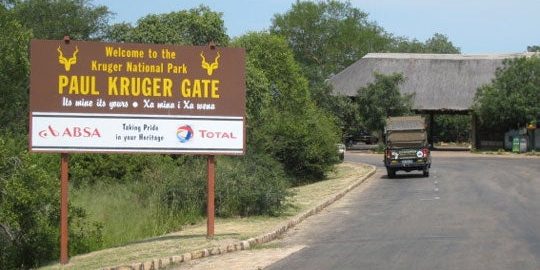Experience the Magic of Kruger National Park Safari: Your Ultimate Overland Tour Adventure
Kruger National Park Safari is a spellbinding journey into one of Africa’s largest and most iconic national parks, situated in South Africa’s northeastern provinces of Limpopo and Mpumalanga. This magnificent park is a testament to the country’s historical and cultural heritage, offering visitors an array of unforgettable experiences.
Discover the Enchantment of Kruger National Park
Named after President Paul Kruger, this vast wilderness covers an impressive 19,485 square kilometers, approximately the size of Israel. Kruger National Park is not just about its immense size; it’s a pristine haven for a diverse range of exotic species, meticulously protected and preserved in their natural habitats. While exploring this enchanting park, it’s crucial to remember that the wild animals are just that – wild. Admire and observe them from a safe distance, letting nature take its course.
A Rich History of Conservation
Established in 1898 as a wildlife protection area and officially opened in 1926, Kruger National Park has a storied history of conservation efforts. It has earned international recognition as a UNESCO Biosphere Reserve, signifying its importance and global significance in the realm of protected areas.
The Big 5 and Beyond
Kruger Safaris offers the thrilling chance to encounter the renowned Big 5 – lions, elephants, buffaloes, leopards, and rhinos. These iconic creatures create vital habitats for other species and maintain the park’s ecological balance. But the magic doesn’t stop there; you’ll be enthralled by the presence of hippos, zebras, giraffes, African painted dogs, black-backed jackals, spotted hyenas, crocodiles, and an astonishing array of bird species.
Immerse Yourself in the Safari Experience
Kruger National Park provides various safari options for every traveler. From open vehicle safaris to closed vehicle tours, day and night game drives, and walking safaris, the park caters to diverse preferences, ensuring everyone’s heart is captured by the wonders of wildlife.
Exploring Kruger’s Treasures
Beyond wildlife encounters, Kruger National Park unveils hidden gems that showcase its historical and cultural significance. Embark on a journey to discover:
Crooks Corner: A historical land passage used by hunters, ivory smugglers, and nomadic tribes.
Thulamela: An ancient Iron Age site, part of the Great Zimbabwe culture, revealing insights into trade networks and gold and ivory trading.
Baobab Hill: A site of historical significance, once used as an ivory route mark and stop between Soekmekaar and Pafuri during goldmine recruitments.
Red Rocks: A mesmerizing area with exposed sandstone slabs along the Shingwedzi River, speaking volumes about South Africa’s geographical history.
Masorini: A fascinating Kruger National Park stone village offering a glimpse into the organized economy of the Stone Age.
Kruger National Park: A Beacon of Ecotourism
The park’s dedication to ecotourism is evident in its conservation efforts and reliance on tourism to fund the protection of endangered species, such as the white rhino. Visiting Kruger National Park means contributing to this noble cause while experiencing the allure of untouched wilderness.
Your Adventure Awaits with Overland Tours
Experience the Magic of Kruger Safari Tours with our expertly crafted Overland Trips. Our comprehensive 15-day South Africa Overland Tours encompass a full-day Big 5 Kruger National Park Safari and an opportunity to witness the Sabie River’s beauty. We offer an array of Kruger National Park Packages, ensuring you find the perfect fit for your travel desires. Embark on a journey that combines history, culture, and wildlife as you explore the wonders of Kruger National Park.
Additionally, we offer small group tours to South Africa, including captivating visits to Cape Town Safari, Pilanesberg Safari, Johannesburg Soweto Tour, Safari Cape Town and Sun City Shuttle Services. Our overland tours and trips will take you on an unforgettable journey, ensuring you witness the best of Southern Africa.
From Soweto Tours to Sun City Bus Timetables, our tours offer a diverse range of experiences for every traveler. Experience the magic of South Africa on small group tours or overland trips and create memories to last a lifetime.
For those with more time, our 20-day Southern Africa Tour departing in October promises an extraordinary adventure through the region. We accommodate small group tours to South Africa, ensuring an intimate and personalised experience.
Don’t miss the chance to behold Africa’s beauty on a captivating Kruger Park Safari. Book your adventure now, and let the Magic of Kruger National Park leave an everlasting impression on your heart.


